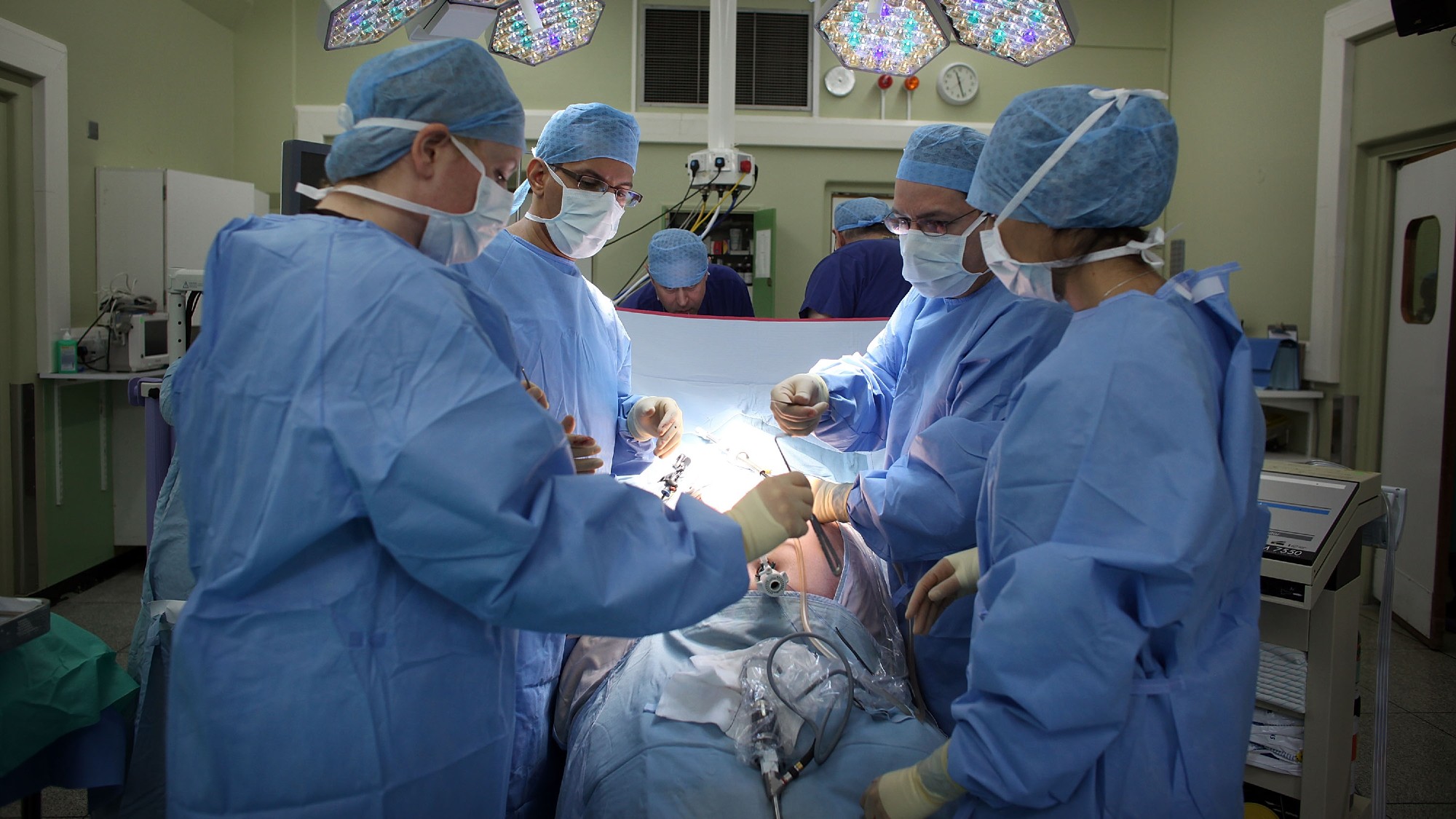Inside the Pentagon
When terrorists targeted the Pentagon, they assaulted a legendary symbol of U.S. military might. For nearly 60 years, the headquarters of the Department of Defense has been a place of intrigue, power, and mystery. What goes on inside its walls?
Why was the Pentagon built?
Just before World War II, the U.S. Department of War was in disarray. Its 24,000 personnel were dispersed in 17 buildings in and around Washington, D.C. With war looming, President Franklin D. Roosevelt asked Congress for authority to construct new buildings to consolidate the department. But the department’s chief of construction, Brig. Gen. Brehon Somervell, went one step further: On Thursday, July 17, 1941, he ordered that by 9 a.m. Monday he be given a basic plan for a single structure to accommodate 40,000 people. Somervell’s architects feverishly scratched out a design that weekend, and construction began on Sept. 11, 1941.
How was it built?
The Week
Escape your echo chamber. Get the facts behind the news, plus analysis from multiple perspectives.

Sign up for The Week's Free Newsletters
From our morning news briefing to a weekly Good News Newsletter, get the best of The Week delivered directly to your inbox.
From our morning news briefing to a weekly Good News Newsletter, get the best of The Week delivered directly to your inbox.
As quickly and cheaply as possible. The basic stuff of the Pentagon is 435,000 cubic yards of concrete. Steel, a critical wartime commodity, was eliminated wherever feasible. Ultimately, 43,000 tons of the metal was saved, enough to build a battleship. President Roosevelt ordered that the facade not be made of expensive marble, so Indiana limestone was substituted. Unlike most of Washington’s neoclassical buildings, the Pentagon has little ornamentation; the result has been called “’40s Functional” and “Mussolini Modern.” At one point, 15,000 workers labored in three shifts, 24 hours a day, working under floodlights at night. The finishing date: Jan. 15, 1943, a mere 16 months after groundbreaking. The total cost: $83 million.
Why is the building a pentagon?
Because Somervell’s original site for the structure, a tract of land called Arlington Farms, was bound by five existing roads. When FDR ordered the building moved three-quarters of a mile southeast to a swampy, low-income residential area known as Hell’s Bottom, the pentagonal design was retained because it made the most efficient use of available space.
How big is it?
A free daily email with the biggest news stories of the day – and the best features from TheWeek.com
The Pentagon covers 29 acres—more ground than any office building in the world. With 6.5 million square feet of space, it has three times the total interior space of the 102-story-tall Empire State Building. With 23,000 daily workers, more people labor in the Pentagon than live in 90 percent of America’s towns and cities, and they tramp through 17.5 miles of corridors. The Pentagon’s 16 parking lots take up 67 acres and can hold 8,770 cars. The building has 7,754 windows, 691 water fountains, and 284 bathrooms.
What’s it like to work there?
The Pentagon’s sheer size and complexity have inspired wags to dub it “Fort Fumble,” “The Fudge Factory,” and “The Potomac Puzzle Palace.” In theory, the arrangement of its hallways in five concentric rings and 10 radiating spokes makes it possible to walk from any one point to another within seven minutes. But many still find it difficult to navigate the endless and weirdly angled corridors. As secretary of defense, even Dick Cheney lost his way. According to one legend, a uniformed Western Union messenger got lost for three days; by the time he found his bearings, he was a lieutenant colonel. The human traffic flow has also confounded our enemies. During the Cold War, the USSR noticed an unusually heavy stream of personnel to and from a structure in the center of the Pentagon’s five-acre courtyard. Figuring it was a vital command installation, the Soviets kept two nuclear missiles trained on it. But it was—and is—only a snack bar.
But is the building functional?
Only up to a point. The no-frills wartime construction has proved to be a nightmare. The Pentagon’s heating, air, and electrical systems haven’t complied with federal standards since 1953. The pipes leak sewage; some ducts can be poked through with a pencil. In 1991, a pipeline break released 7 million gallons of water, threatening to short out vital electronic systems that were used to communicate with U.S. forces fighting the Gulf War. There are no passenger elevators, and the 13 freight elevators have guillotinelike doors that inflict about a dozen minor head injuries a year. Every day, overloaded circuits cause up to 40 local power outages.
Why not modernize it?
The federal government has been doing just that—since 1993. That year, the Pentagon began a 20-year, $1.2 billion overhaul. Because the building cannot be shut down completely, the plan is to tackle its five sides one at a time. The building’s antiquated heating, electrical, plumbing, sprinkler, and mechanical systems are all being upgraded. The Pentagon is being purged of many toxic substances, including lead-based paint, PCBs, and 10,000 tons of asbestos. The overhaul also includes reinforcing the building’s brick-and-concrete walls with additional structural steel, bulletproof Kevlar mesh insulation, and blast-resistant windows. Those security upgrades were planned before the Sept. 11 attack on the building.
Has the overhaul made a difference?
It may have saved many lives on Sept. 11. Wedge 1, the first of the sections to be renovated and strengthened, was five days from completion when American Airlines Flight 77 slammed into it. Although 125 people in the building were killed, experts believe the new safety features prevented the toll from being even worse. The fact that the section, which took three years to renovate before the crash, is now almost completely repaired points up its resilience. Today, the only external evidence of the attack is a single 4-foot-long limestone slab at the foot of the Pentagon’s rebuilt outer wall, just 20 feet from where the plane’s nose struck. Charred to a dark brown-black by the explosion, it now bears the inscription “September 11, 2001.”
Talking the talk
The Pentagon has bred a unique culture that extends to the jargon spoken within its walls. In his book Assignment Pentagon: How to Excel in a Bureaucracy, retired Air Force Maj. Gen. Perry M. Smith provides a lexicon of some frequently used catchphrases:
Sprinkle holy water: Give approvalHorseholder: Executive assistantDon’t break my rice bowl: Stay out of my businessGold plate: Add lots of systems to a weapons platformElevator speech: A short, two- or three-minute briefingTap dance: A slick briefing, usually lacking substanceAnalysis paralysis: Studying issues excessivelyMushroom treatment: Keeping superiors in the dark and feeding them “crap”Pearl Harbor file: Keeping a thorough record, so that when disaster strikes you can protect yourself from blame
-
 How music can help recovery from surgery
How music can help recovery from surgeryUnder The Radar A ‘few gentle notes’ can make a difference to the body during medical procedures
-
 Nursing is no longer considered a professional degree by the Department of Education
Nursing is no longer considered a professional degree by the Department of EducationThe Explainer An already strained industry is hit with another blow
-
 6 gripping museum exhibitions to view this winter
6 gripping museum exhibitions to view this winterThe Week Recommends Discover the real Grandma Moses and Frida Kahlo